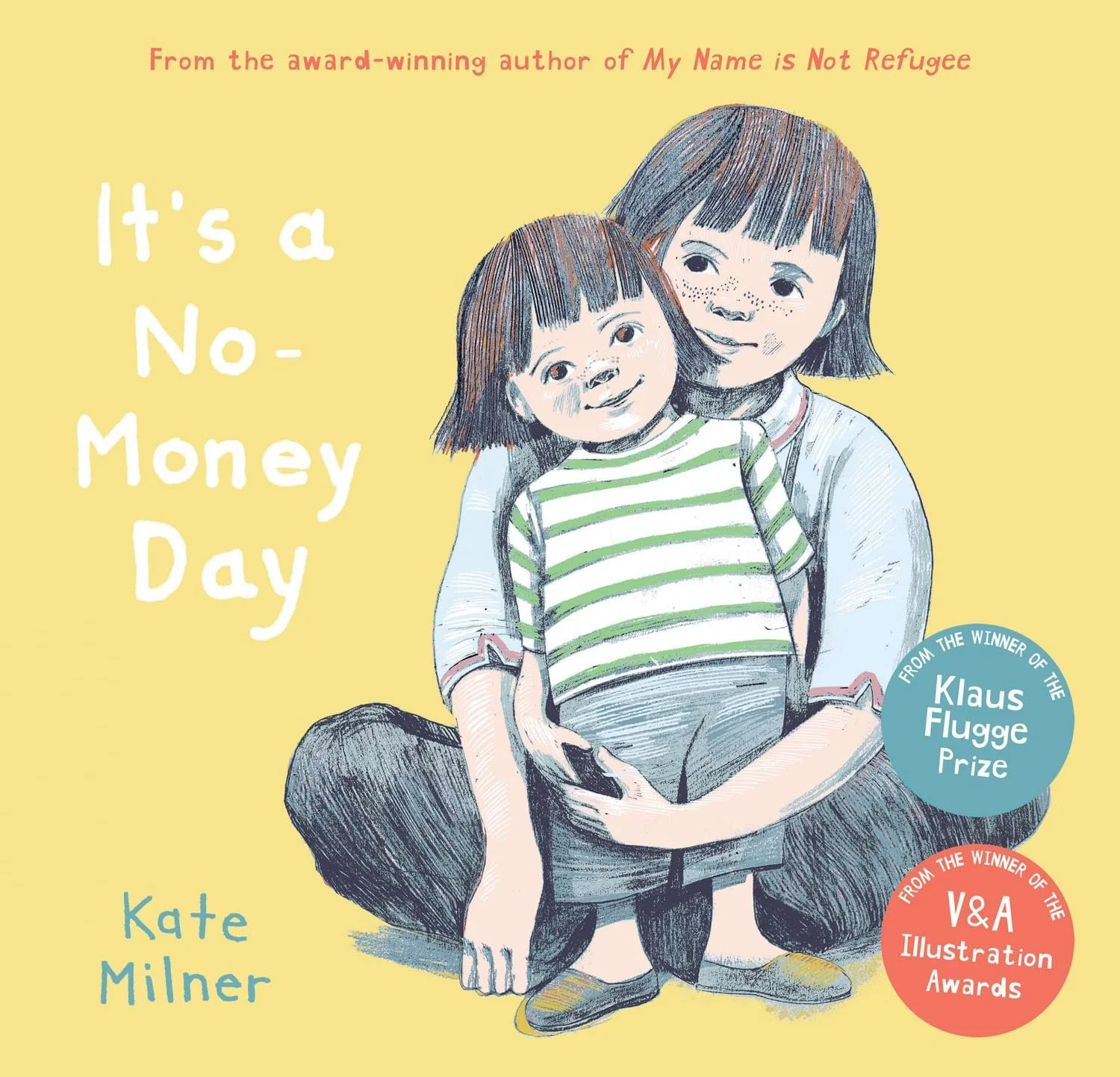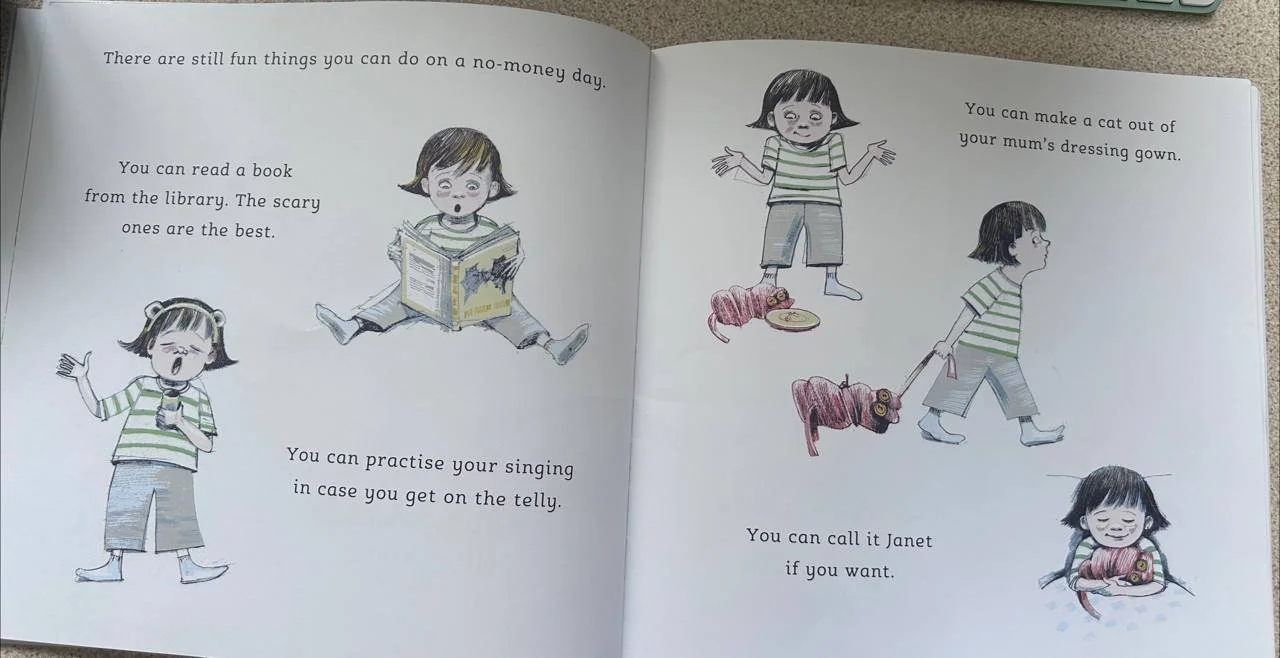
It’s a No-Money Day
By Kate Milner
-
is a British writer and illustrator.
-
Originally published in 2019 in Great Britain by Barrington Stoke.
-
For ages 4-10, depending on what you wan’t to focus on.
My mum works really hard and knows lots of fun things to do that don’t cost any money. But when there’s nothing left in the cupboards we have to go to the foodbank. Maybe one day things will be different…
There’s a cliche phrase Don’t judge the book by it’s cover. This is exactly the case. I judged it and at first wasn’t impressed at all. You know, there are plenty of 10 a penny books that are there to be read only once and a lot of them crowd the shelves of charity shops. They are usually square and just the size of It’s a No-Money Day, the text is scarce and the font is pretty big. You recognise the layout when you see it. I thought about the books that we see in The Works shops. They do 10 for £10 bundles. It pretends to be cheap and cheerful and just right for three-year-olds. But it’s not as simple as it looks.
My students straightaway noticed that the text doesn’t really fit the illustrations. Some of them couldn’t put it into words but they knew something was off. And I asked why, they said that the illustrations were telling a different story and anyway were saying more than the words.
It starts with the girls and her mum in the bed. But’s it’s not all. We can’t see the walls and what’s around the bed but we assume that it’s quite an enclosed space as there are some pieces of clothes hanging right over their heads, they have to share the bed and also the blue bits in the picture is a frame and it squeezes the characters together to emphasise the miniature size of the room.
Why are there no words on this page? My class said that’s because there’s nothing to say. They don’t have anything left in the cupboard and mum wouldn’t say anything. We thought that the mum refuses to talk about their situation. A lot of parents would avoid talking about it. Some think their children are too young to understand, as I think this girl is. Some feel too down about it and can’t admit it. They hate being poor.
I’ve said that the book pretends to be simple. I think it’s because the mother is not talking, she is keeping everything lighthearted. And the girls doesn’t understand what’s going on. We can see it on this page when she says mum wasn’t hungry. She was. She just wanted to give the last piece of toast to her child. Mum lies about their problems and the books lies about being for babies. The book along with the girl doesn’t understand the drama lying deep underneath.
Here is one more example of a very childish layout. See how Kate breaks the text down into small bits.
The girl is very chilled. She is too young to ask herself the questions people tend to ask. Why are we so poor? How do we fix that? Who do we blame? She has a very small world and she just gets on with it. She truly thinks mum loves going to charity shops only to try things on.
And when they go to the foodbank, she again sees something different in it, something adults don’t ever appreciate. A couple of biscuits and a glass of squash make her happy enough. It’s good that she can also tell the lady all about the kitten they might get.
Then they dream. Mum dreams of an old car, a washing machine and coats. They are basic things that most people have. And this book hits home to anyone who’s ever wanted anything simple beyond their mans. Meanwhile, the girl wants fifty-seven cakes, a kitten and a floating ring.






